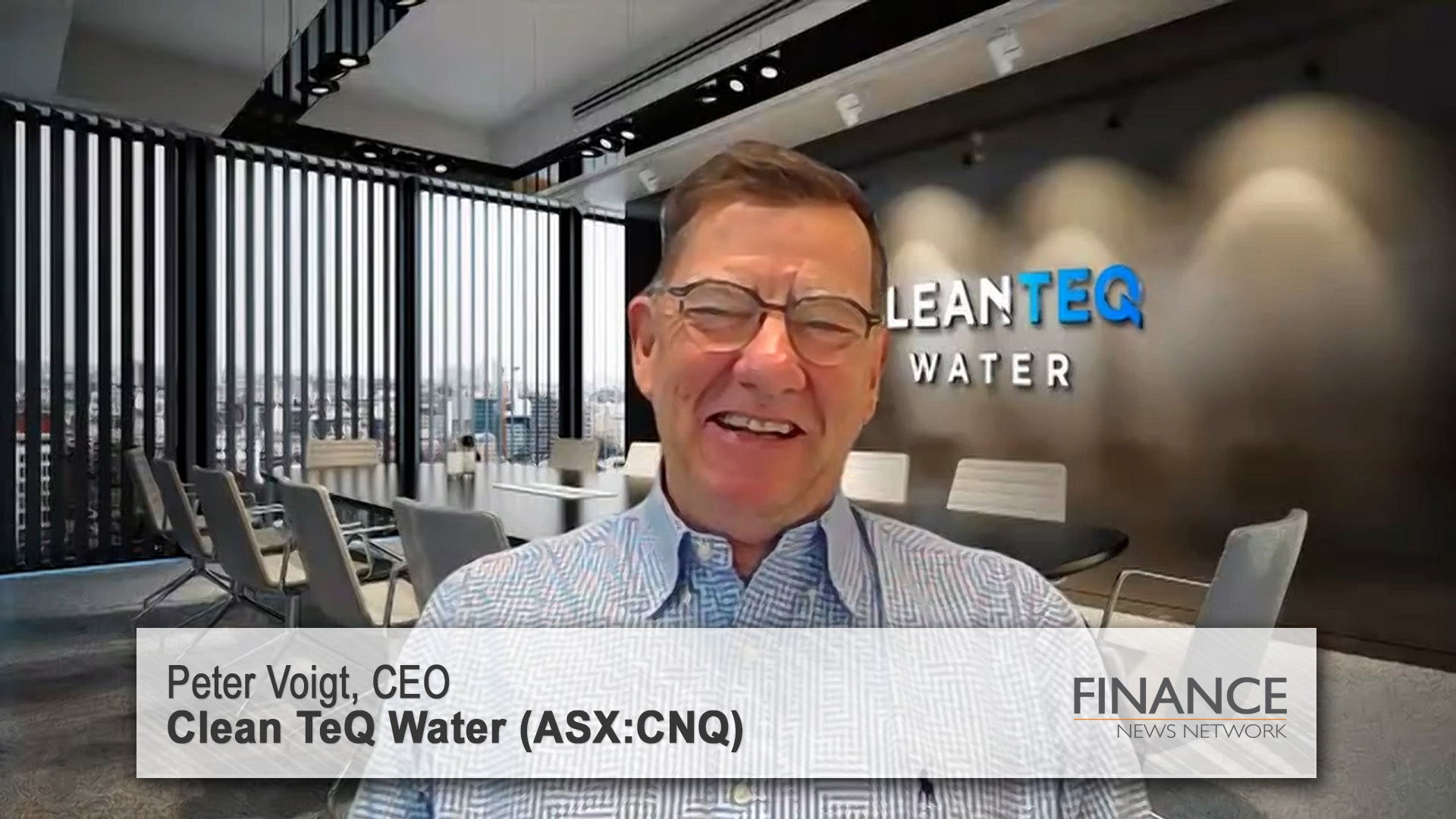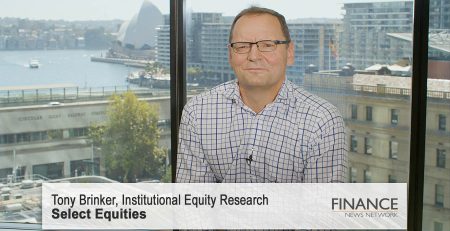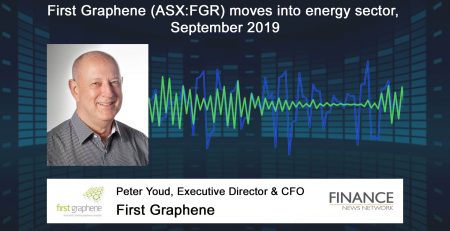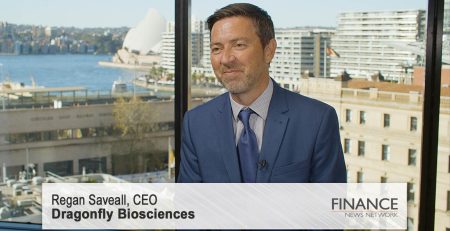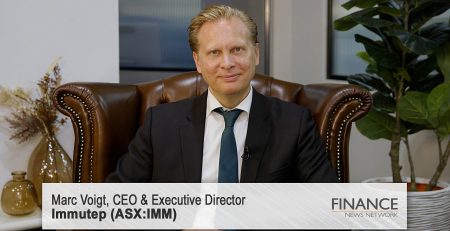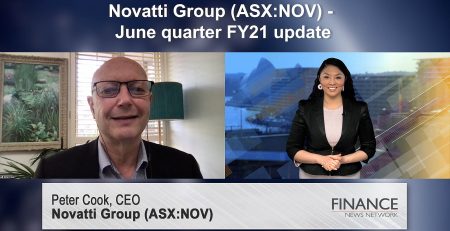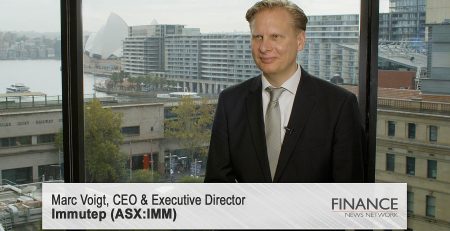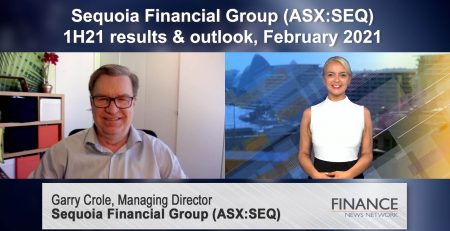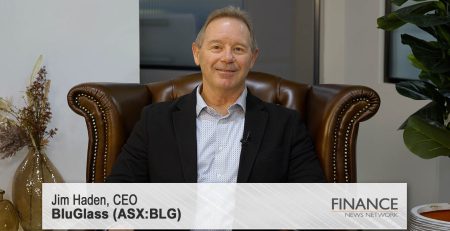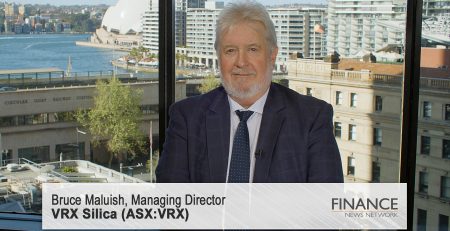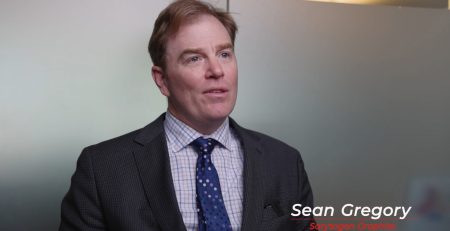Clean TeQ Water: Addressing critical fresh water scarcities
Paul Sanger: I'm Paul Sanger for the Finance News Network, and today I'm talking to Clean TeQ Water. Clean TeQ Water, trading under the ASX code CNQ with a market cap of 25 million, is a global technology leader specializing in providing economic and environmentally sustainable solutions to address critical issues related to fresh water scarcity, mine tailings, and metal recovery. Clean TeQ's core markets include water and wastewater recycling, lithium production, and the remaining and rehabilitation of mine tailings. Today, we're talking to the company's Chief Executive Officer, Peter Voigt. Peter, welcome to the Network.
Peter Voigt: Thank you for having me, Paul.
Paul Sanger: Now, Peter, fresh water is recognized globally as a scarce resource. What are some of the technologies that Clean TeQ uses to deliver outcomes?
Peter Voigt: Paul, I don't think people really understand the depth of this problem, really. Only 3% of the world's water is fresh and only 0.3 is found in places we can get at it. And that's groundwater, lakes and rivers. And so what happens? We use it, we contaminate it, we throw it back into our rivers and oceans. Today, only about 2% of contaminated fresh water is treated and reused, and we've got to change that situation. We've got to make sure every drop of polluted fresh water is harvested, reused, and we really also need to look at recovering other valuable byproducts in the water, which is calcium, magnesium, phosphates, and nitrogens.
So today's solution is, let's build more water desalination plants. Now, that's from sea water to fresh water. So it's a pity if you don't live near the sea and you don't have the financial capacity to build one or you don't have the energy to run one. So Clean TeQ sees this as an opportunity. Contaminated fresh water is a really valuable resource, and when it's cleaned properly, it can be reused in agriculture, industry, and even as potable water. So we've developed a whole suite of technologies to treat and reuse this contaminated fresh water in an economic and sustainable way. Our separations and purification technologies, which include ion exchange membranes, biological and chemical processes, and we use these like a Lego set to make complete water treatment solutions and also resource recovery systems.
Paul Sanger: And Peter, the recent quarter saw Clean TeQ progress projects in the uranium, lithium, and fresh water markets, including advancing wastewater treatment and metals recovery projects. Can you tell us a little bit more about these projects and what they mean to the company?
Peter Voigt: Look, first thing to say is that these projects have all used this Lego set type approach that I just talked about. So our uranium project in Heathgate in South Australia is a good example of how our technology can bring value to our clients. So here, our continuous ion exchange technology allows the client to process the extracted uranium and turn it into a high-grade aluit that is able to look after the variable inputs that he gets from his in-leach type processes. So by maintaining a good high-grade tenor from the process, we've been able to save him a lot of money in downstream processing. So that was a good outcome for him.
In the lithium space, we've formed a joint venture company in North America called Go2Lithium to explore and develop brine assets in that jurisdiction. And Go2Lithium has now licensed Clean TeQ's direct lithium extraction technology and has already signed an equity for technology agreement with LithiumBank, which is a Canadian-listed company. And we have now the ability to earn up to 26% equity in LithiumBank by taking them from their PEA, preliminary economic assessment, all the way through to their definitive feasibility study. And we're looking to do that over the next 18 months.
LithiumBank's Boardwalk and Park Place assets are two of the biggest lithium brine assets in Canada. And we expect the value to increase quite substantially over the journey as we take them through their various stages of development. We've already updated the Boardwalk PEA with the inclusion of our own DLE technology, and we've created an additional $600 million in NPV for the project by the DLE technology was able to deliver higher extraction rates for the lithium and it was also able to lower the operational costs of that DLE process. So that's been a great outcome for us in the lithium space.
In water, we're currently delivering the Townsville Recycling Project, Water Recycling Project, which is an important milestone for us in FY24, but we're looking to obviously do more in this area. By disinfecting wastewater, water can be then used beneficially for irrigation. And further afield in the Middle East, we've just also delivered a groundwater treatment process using our specific High Rocks technology, which is reverse osmosis technology, and we've been able to increase the recovery of water from 35% to 90%. Now, that increase means that the scarce groundwater resource in the Middle East is able to now be able to be used for beneficial reuse and is not over-extracted for the oil and gas industry, which is where this water is being used.
Paul Sanger: So we talked a bit about lithium and direct lithium extraction and the benefits of DLE versus retracting lithium from brines, and there's a lot less water used in DLE. There's been recent movements in lithium prices. Have they impacted the company at all? They've been incredibly volatile, 80% off in the 12-month period. And do you have any views on where you see lithium pricing going in the future?
Peter Voigt: Yeah. Well, let's face it, certainly that lithium price has affected everybody who's been associated with lithium. You can't get away from that. The news is full of hard rock plants closing down, et cetera, et cetera. But look, lithium has been a real roller coaster. You're a prince or a pauper, by the sound of it, in the lithium game. But it's a new industry, it's a new commodity, and we know that lithium demand's not going away. So today, we've got what, 700,000 tons of production of say LCE, lithium carbonate equivalents. We know that they're going to need 3.5 to 4 million tons of lithium equivalent in 2030 to meet the EV battery predictions and stationary sources. So there's got to be a change in the price structures as, I guess, new projects come online.
And so the other thing we'd say is where that lithium comes from though is going to be just as important as production, to tell you the honest truth. So currently, the majority of our Australian hard rock miners are all sending their lithium concentrates off to China, where it's produced into the battery-grade lithium. So the geopolitical situation is such that America is going to look to be self-sustaining in lithium. There's no doubt about that. The amount of money they're throwing at it is incredible. USA and Canada are really going to be looking to their own natural sources of lithium, and that's why we have set up our technology in Canada. And I previously mentioned cost structures are going to be critical, and you'll need to be in the lowest quartile if you want to survive that inevitable shakeout that's going to occur in the future.
US-based oil companies we know are also sniffing around all these lithium projects, and I'd suggest that in the next two or three years, they will start to look at these juniors and end up bringing them together to create what I call mega lithium production facilities. So I think that price and all that is going to shake itself out, probably in the area of 25 to $30,000 per ton of lithium carbonate.
Paul Sanger: Thanks for those insights, Peter. Very, very interesting. I love the bit about bringing in the oil companies. I think you're bang on the money there. They've been sniffing around for a while, and I think they're ready to increase their activity in this space.
Peter Voigt: We're seeing it already, Paul. Even LithiumBank, who we're dealing with, is already in, shall we say, conversations with oil companies. So there you go.
Paul Sanger: So, moving on, how would you summarize Clean TeQ's market, and what is the company focusing on for its future growth?
Peter Voigt: We're really in three key markets, which are impacted by energy transition and climate change. So that's the lithium area, mine tailings management, and fresh water. All these things are coming together. They seem to be very disparate areas, but they're all going to start coming together over the next few years. We're also focusing on key regional areas, being North America, the Middle East, and Australia.
The thing about Clean TeQ is our technologies are at the core of our growth. We're commercializing these technologies through partnerships, because we can't be everything to every man. So we have to join up with the right technical partners and asset owners globally, so companies like LithiumBank, Heathgate, BHP, NESR. All these people that we're doing deals with at the moment, they're going to become our partners in the future. And as I've already said, this virtuous partnership with Go2Lithium is already starting to show fruits.
Paul Sanger: And just a little bit more, how is the pipeline of future projects looking for you?
Peter Voigt: Look, we've got a really strong pipeline of opportunities in key markets, which is, to us, really exciting because we see our technologies as being central and critical to the changing environment in which we now live, and we're proving up our technologies in a number of different markets. We're not going to be a one show pony here. Our technologies are transportable across very many different market verticals, but we have to be careful not to try and spread ourselves too thinly. So that's why I talked about we're going to lithium, mine management, and water is where we're going, and that pipeline, I think, is going to be very, very important going forward. I think FY24 is our year of showing what we can do. FY25 is going to be, now let's grow exponentially in these markets.
Paul Sanger: Well, I was going to finish up and say, what should investors be expecting over the next 12 months in terms of news flow? And you kind of already answered that.
Peter Voigt: I have a little bit. Look, we're singularly focused on creating shareholder value. In the past, we were a tech company. Okay, our tech company is now growing up. We now understand our shareholders have put a lot of money in we need now to return. So we are going to do that in the next 12 months, and we'll do it through our JV models, our commercialization, our partnering models, and that gets us into big projects in a big way quickly. And so, I think you'll find we've got a lot to say about our existing projects and new ones coming up in the next 12 months.
Paul Sanger: Peter, it's been an absolute pleasure having you on today. Thank you for your time.
Peter Voigt: Thank you so much, Paul.
Ends.
Copyright 2024 – Finance News Network
Source: Finance News Network

